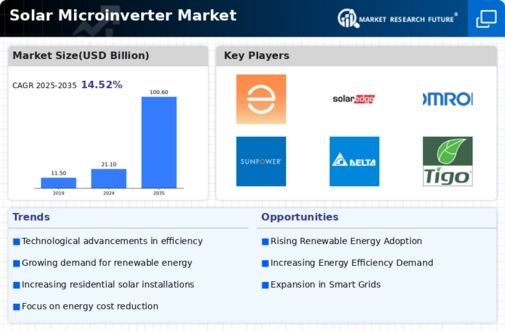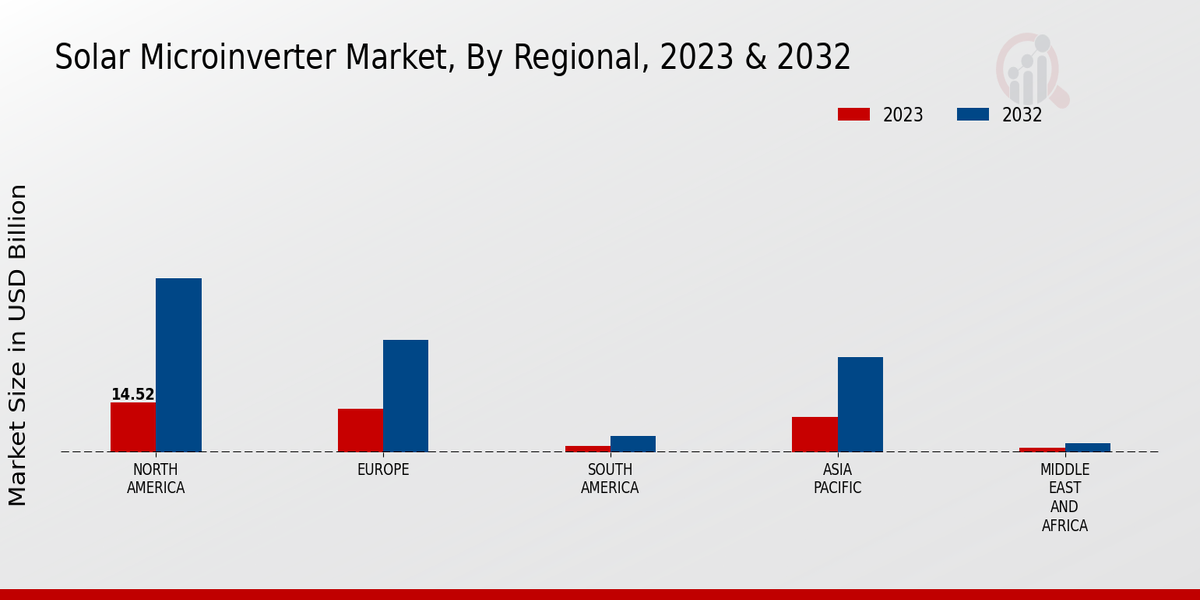Solar Microinverter Market Summary
The Global Solar Microinverter Market is projected to grow from 21.1 USD Billion in 2024 to 100.6 USD Billion by 2035.
Key Market Trends & Highlights
Solar Microinverter Key Trends and Highlights
- The market is expected to experience a compound annual growth rate (CAGR) of 15.24 percent from 2025 to 2035.
- By 2035, the market valuation is anticipated to reach 100.6 USD Billion, indicating robust growth potential.
- In 2024, the market is valued at 21.1 USD Billion, reflecting a strong foundation for future expansion.
- Growing adoption of solar energy technologies due to increasing environmental awareness is a major market driver.
Market Size & Forecast
| 2024 Market Size | 21.1 (USD Billion) |
| 2035 Market Size | 100.6 (USD Billion) |
| CAGR (2025-2035) | 15.24% |
Major Players
Enphase Energy, SolarEdge Technologies, ABB, Omron, SunPower, APSystems, Delta Electronics, LG Electronics, Tigo Energy, SMA, Eaton, Fronius International, Schneider Electric, Ginlong Solis, Huawei












